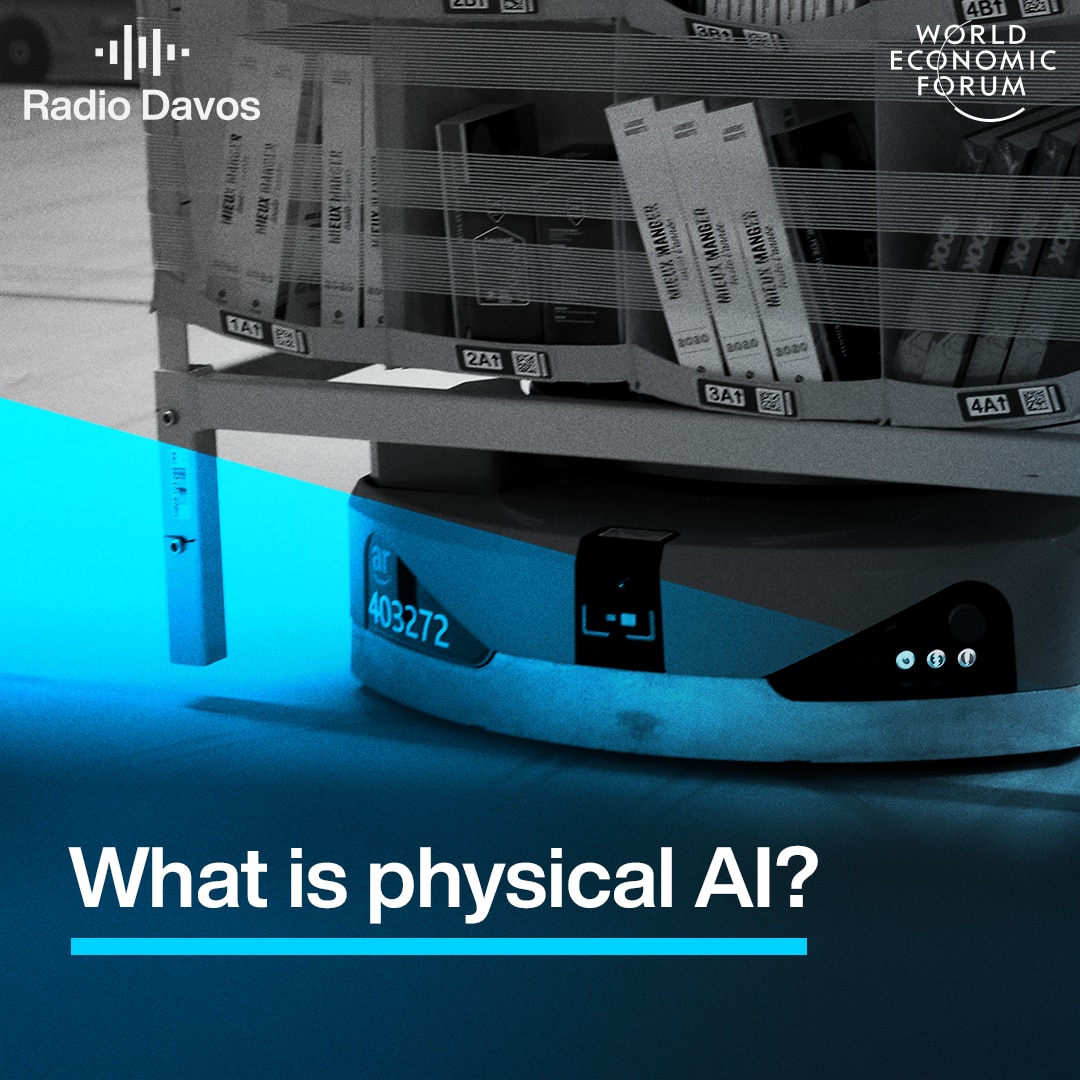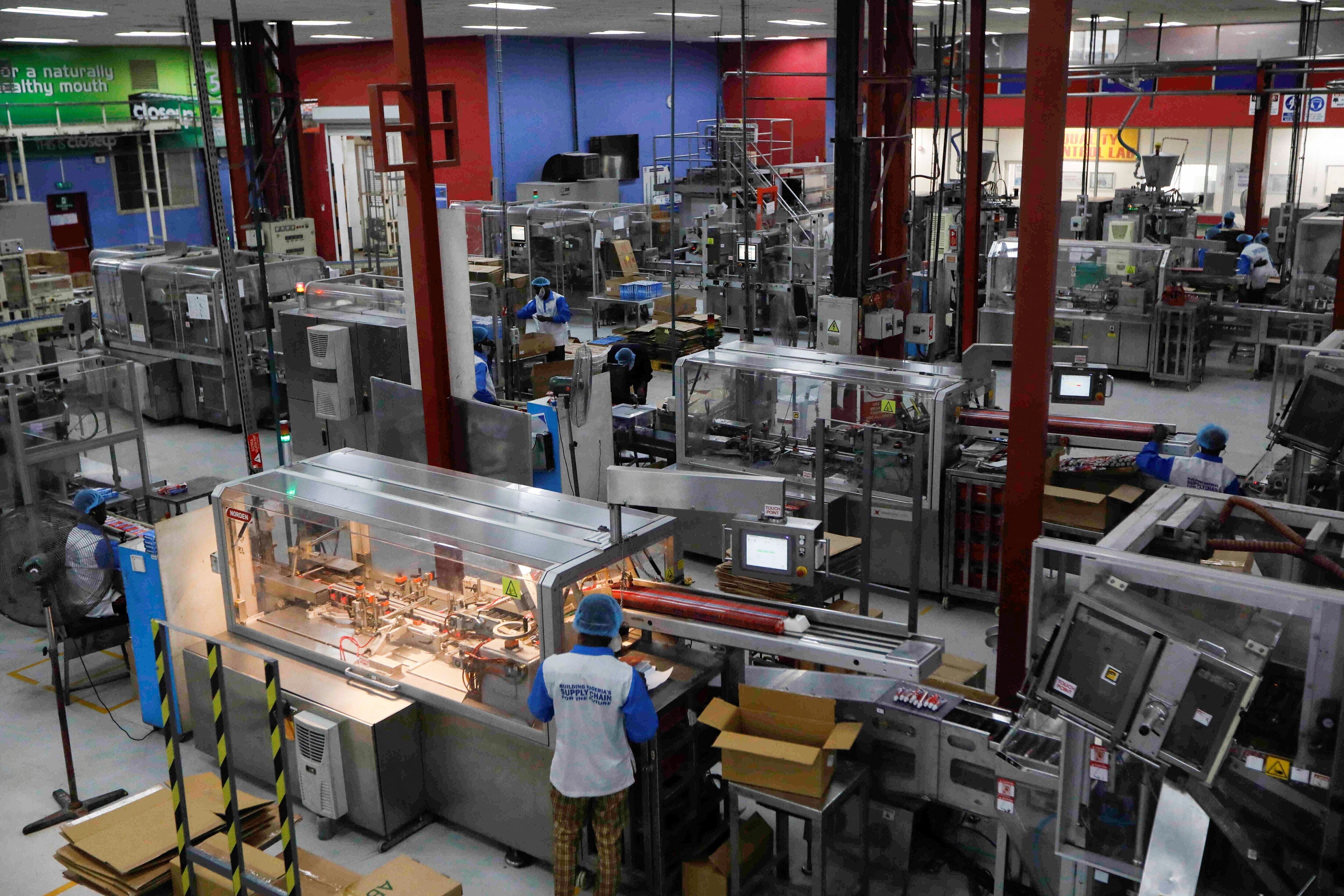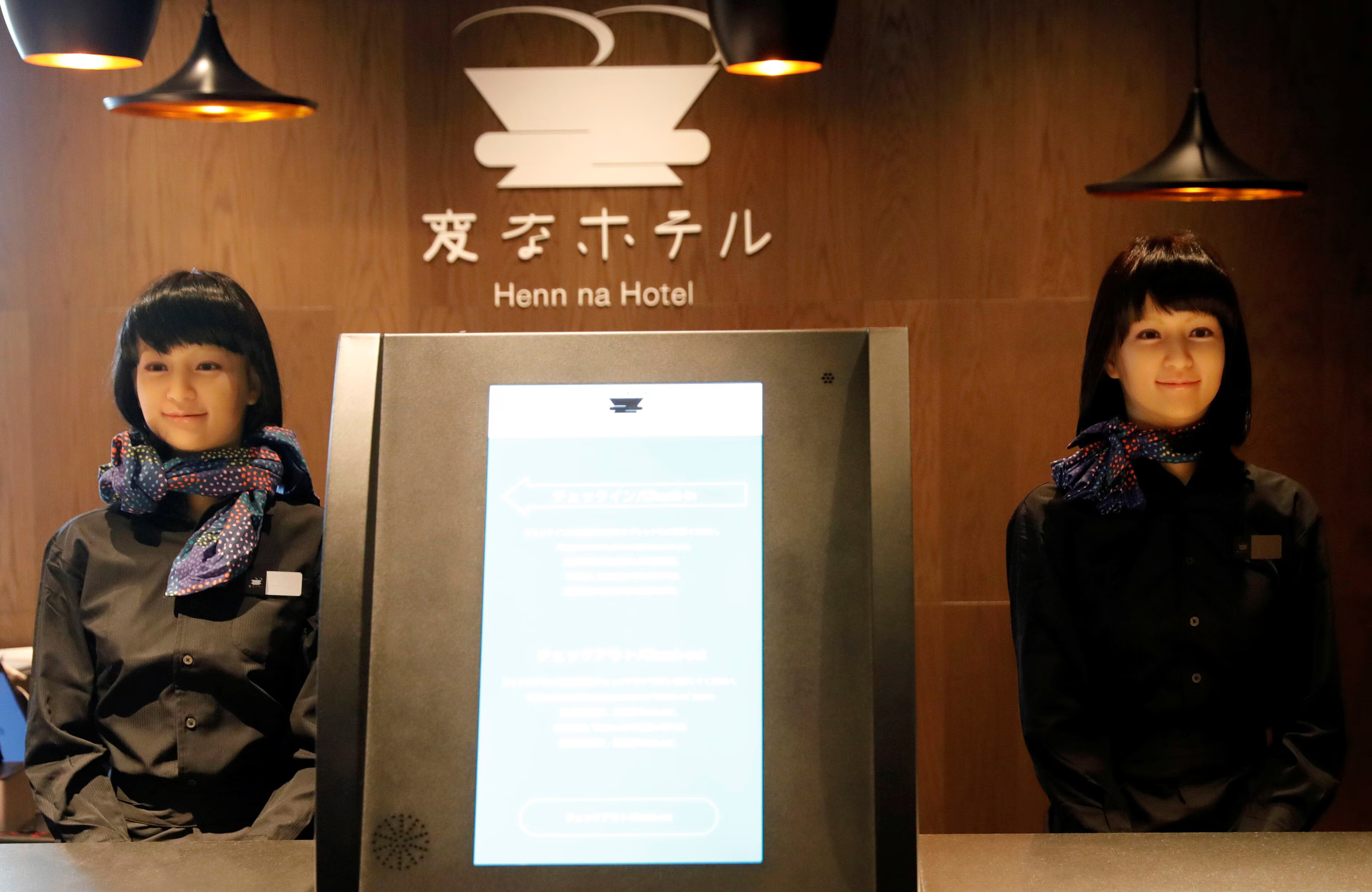Workplace wellbeing and WFH: what’s best for business and for you?
ポッドキャスト・トランスクリプト
This transcript has been generated using speech recognition software and may contain errors. Please check its accuracy against the audio.
Jan-Emmanuel De Neve, Professor of Economics and Behavioural Science, University of Oxford: Whatever companies do, however much they invest to effectively raise workplace well-being, it pays in terms of gross profits in billions of dollars
Robin Pomeroy, host, Radio Davos: Welcome to Radio Davos, the podcast from the World Economic Forum that looks at the biggest challenges and how we might solve them.
This week - are you happy in your job? If not, you’re in good company
Jan-Emmanuel De Neve: About a quarter of workers in the US, UK, Canada and beyond are actually thinking themselves as being happy at work. And so there's a lot of room for improvement.
Robin Pomeroy: That’s right, three out of four of us don’t consider ourselves happy at work, according to this Professor of Economics and Behavioural Science. But does that matter, as long as we get the job done - and why should our employer care?
Jan-Emmanuel De Neve: How people feel at work is a leading indicator of downstream business consequences. Workplace well-being, that is a leading indicator to future stock market performance.
Robin Pomeroy: Jan Emmanuel de Neve tells us about his new book Why Workplace Wellbeing Matters - and has tips for companies on how to improve the happiness of their employees.
Jan-Emmanuel De Neve: You can throw mindfulness apps at people and you can organize yoga classes and those things are good and interesting and important, but you will not yoga your way out of structural issues in the organization.
Robin Pomeroy: Follow Radio Davos wherever you get your podcasts, or visit wef.ch/podcasts where you will also find our sister programmes, Meet the Leader and Agenda Dialogues.
I’m Robin Pomeroy at the World Economic Forum, and with this look at why and how we should all be happier at work…
Jan-Emmanuel De Neve: The business case, for workplace well-being, making the world of work a better place in 2025.
Robin Pomeroy: This is Radio Davos
Are you happy at work? And if so, do you think that helps you do the job better? A Professor of Economics and Behavioural Science at the University of Oxford’s Saïd Business School thinks so - and says he has the real-world evidence - from companies and millions of employees - to prove it.
His book Why Workplace Wellbeing Matters: The Science Behind Employee Happiness and Organizational Performance, that he co-authored with colleague George Ward, also says there is evidence that companies with a happy workforce will perform better for shareholders.
He has even helped create, along with employment site Indeed, an index of companies - the Work Wellbeing 100 - which he says outperforms the market.
In this interview, De Neve, a leading voice on human happiness and wellbeing, defines what he means by those terms, and has a call to action to employers.
And he answers the question: does working from home make us happier - the answer might surprise you.
He spoke to my colleague Kate Whiting, who started by asking Jan-Emmanuel de Neve the deceptively simple question: what is the world of work in 2025?
Jan-Emmanuel De Neve: It's a great question.
The world of work in 2025 is one that's gone through COVID, where there was a big focus on mental health and wellbeing. But to some extent, the pendulum is swinging back to sort of pre-COVID era, where the focus may have been a bit more on engagement and performance and productivity, and less on the human case for investing in workplace wellbeing.
And in a way, that's a bit of a shame because the reason why workplace wellbeing matters a great deal, I found throughout writing the book with George, is essentially that work in 2025 isn't necessarily a positive place. There's much room for improvement. So thanks to a crowdsourced effort in partnership with Indeed.com, we know that about a quarter of workers in the US, UK, Canada and beyond are actually taking themselves as being happy at work. And so there's a lot of room for improvement there.
The other reason why workplace well-being matters such a great deal and why the workplace in 2025, there's still much room for improvement on that front is because there's a huge gap between saying and doing from senior managers. And I know the audience here for the World Economic Forum is precisely that. So this is really a call to all senior managers listening in, is that while most people find this intuitive, that people are their greatest assets, and if you take care of people, they'll take care of business. But that's the saying. And when we asked, in an HBR survey that we advised on, do you think that there's a competitive advantage? You're right. Intuitively, most senior managers will say yes. In fact, well over 80 % of people said yes. Investing in people will be good for business. But in that same survey, when we actually ask senior managers to sort of prioritize between possible stakeholders, then we find that less than a third actually prioritize their people and, worse, only 19% - ao half of that third approximately - have actual actions against a strategic priority around investing in people and making that really the core of their business.
And so to me, both the fact that there is so much room for improvement on making the world of work a better place in 2025 and that we find frankly a huge gap between what senior managers say and what they do in terms of prioritizing their people, makes it the business case, for workplace well-being, ought to be made.
And that's exactly what our book, of course, does leveraging data sets at a scale never seen before, and we'd like to think also raising the level of the evidence quality on why workplace well-being matters for productivity, retention, recruitment, leveraging the evidence base to a level of robustness not shown before in the industry.
Kate Whiting: In the book you talk about, you obviously define what workplace wellbeing is, but you also say what it's not. And I think what comes across really clearly is that it really differs from job satisfaction.
So I wonder if you could maybe talk me through that. You give a really good marathon analogy in the book. So what exactly is workplace wellbeing when we're talking about it?
Jan-Emmanuel De Neve: Well, workplace wellbeing is ultimately how we feel at work and everything else feeds into that. So it's a holistic KPI, if you will, an indicator for how we feel at work and how we think about our work. And importantly, it is how we feel or think about our work that then drives our actions in terms of staying on the job, being engaged and productive on the job and recommending it to others.
And so let me backtrack a bit. So essentially how we feel at work is captured by experiencing positive emotions. Are you happy at work? Are you not experiencing overly much stress at work? And the reflective piece is captured through items like job satisfaction. Are you satisfied with your job? And finding purpose and meaning in the work you do.
Importantly, these measures that I've just related to, happiness, stress, job satisfaction, sense of purpose and meaning in the work you do are outcome indicators. They don't explain why you feel the way you do it, but they capture how people feel while at work or when they think about their job.
And that's a very, very important conceptual split to, to be aware of. And something that when I speak with senior leaders in the HR or, or CFO or CEO space is that they typically think of workplace well-being as a long list of good things from fair compensation to belonging to trust to DEI to job satisfaction, to engagement, you name it, but they don't make a conceptual split between sort of the inputs, what drives how people feel, and an overarching indicator for capturing how people feel in your workplace. And that is absolutely important to do. Doing so will have a lot of piece of the puzzle fall into place, both in terms of being able to prioritize about where to invest typically limited resources and trying to improve workplace well-being.
And also importantly, it will give you a focus area, KPI, for how your people are actually doing. And so if the CEO or CFO are asking a chief people officer, so how are people doing at the companies? Are they feeling better or worse as a result of XYZ policy intervention? Then there is a singular answer. There is a single item, a work well-being score that can really capture the overarching feeling of how people feel at work.
And importantly, it is changes in how people feel at work that drive their behaviors.
I've made the point early on, but I cannot emphasize it enough. It is how people feel that drives whether they are engaged, productive, whether they recommend the company, or whether they actually stay at the company longer than they would otherwise.
We picked this up in data across industries, but having worked now with a number of wonderful WEF members myself, it's extraordinary to see within company data, when you properly measure and survey workplace well-being, capture that outcome indicator, you'll see it is a leading indicator. It's predictive of hard, objective outcome indicators, such as retention, employee net promoter scores, customer satisfaction, and, obviously, I presume the holy grail for a lot of folk, productivity and engagement.
Kate Whiting: You touched a little bit on productivity, but I want to really dig down now into why it matters that people are feeling happy at work. And it's not just about productivity, is it? It's more than that.
Jan-Emmanuel De Neve: So what we found is that there's essentially three pathways to performance, leading from how people feel at work to performance and ultimately the bottom line of organizations. And they run through productivity, feeling good today or feeling better this week will have immediate impact on how you perform today or this week. And we've in partnership with British Telecom, BT, we've been able to show that causally for the first time in the field. So that's really exciting.
The second pathway is essentially retention, probably the most obvious one. If people feel good working at XYZ company, then they're more likely to stay. And we found when we then look across industries that between a good workplace, measured through our Indeed crowd sourced survey, versus a not so great workplace, we find there's almost a third difference in retention. So less annual voluntary leavers. So people that you don't want to leave actually leaving because they're not as happy as they ought to be working at your workplace.
That's pathway number two. And then the third pathway to impact is talent attraction, recruitment. And so here, thanks to my colleague and collaborator, George Ward, who for his MIT PhD thesis leveraged the rollout of the Indeed Work Wellbeing score to sit tight, randomized 24 million American job seekers into either seeing crowdsourced data around workplaces that they were thinking about applying to versus not seeing crowdsource workplace well-being data. And what we find is essentially that people's job search behavior is reactive, responsive, sensitive to workplace well-being.
It may not come as a huge surprise, but to be able to show it this granularly in the data at this scale is really rather extraordinary. So it shows that third pathway to impact, which is essentially workplaces that are good workplaces are more attractive employers.
Again, it's all very intuitive, but to be able to show it is huge.
And this in the mid to longer run has huge consequences, because if you're the more attractive employer, attracting the better talent in the first place, that will pay dividends down the line, needless to say.
Now, I've given you three pathways, productivity, recruitment, and retention. I haven't actually given you a business case. And the reason why is that productivity, recruitment, retention are the clear benefits of improving workplace well-being. What I haven't touched upon is what are the costs.
And so you may be faced with a CFO who's a bit skeptical of all this workplace well-being language. And he says like, fine, I believe you. There's causal evidence for why a happier worker might be more productive. But what will it cost me to raise the well-being in the workplace?
And so here the good news is, is that in the book and in our research in partnership with Indeed and in academic papers by now published left and right, what we found is that if you look at the profitability of organizations, and we have comparable profit data, obviously for all the US listed companies, for whom we also have systematic crowdsourced workplace well-being data, and we've put one and one together, and what we find is that whatever companies do, however much they invest to effectively raise workplace well-being, it pays in terms of gross profits and billions of dollars and profitability ratios as well.
So we may not be able to have the exact number of what it might cost an organization to raise workers' well-being, but whatever it takes to effectively do so pays in terms of profitability. And that's something that we found in the hard financial metrics of listed companies. But excitingly, and it's gotten a lot of attention, including in World Economic Forum reports and a lot of media outlets, is obviously then ultimately the link to stock market performance.
And where we show essentially that if you invest in those or that if you were to invest in companies that have the highest workplace well-being, that is a leading indicator to a future stock market performance. And that's really exciting. It shows that, and here I'm quoting my colleague Alex Edmonds of London Business School, that the stock market doesn't quite fully value or capture the intangibles of how people feel and that how people feel at work is a leading indicator of of downstream business consequences as we've sort of alluded to, because if you make people feel better at work, productivity gains, retention gains, recruitment gains, and these pathways to performance make their way in the short, mid to long run onto the bottom line. And then you get these earnings surprises suddenly in the market, and then the market adopts and adapts and raises the equity value of those companies.
And that's really, really exciting. And we've been able to show this now for the last five years. It's really exciting. We've been having these crowdsourced data since 2019, thanks to Indeed. What we find is that if you invest in the Work Wellbeing 100, you could invest in the top 50, top 100, whatever. But if you, we've got all these data for the list of companies, and if you invest in the best places to work, according to the people's own voices, your workers telling us through crowdsourced surveys, what we find is essentially that you outperform the S &P 500, you outperform the NASDAQ year on year on year, we're now five years in, and that's really, really exciting. And obviously members of the World Economic Forum are aware of this research and are acting on it.
Kate Whiting: You mentioned before the drivers of workplace wellbeing, and I wonder if we could sort of get into those then?
Jan-Emmanuel De Neve: Absolutely. So we've now spoken a lot about how to measure it, why it matters to do so properly. We've talked about the pathways to performance and ultimately the business case for it.
What we haven't talked about is well, what drives, what explains these differences in workplace wellbeing across companies and across industries. And then beyond that, what interventions work to actually move the needle.
And so importantly here is I've defined work wellbeing as how we feel at work and how we think about our work. And that's a great, that captures sort of an indicator of the state of wellbeing in an organization. What we don't capture with those items is why we feel the way we do. And that's where we get into the drivers. And it's also the drivers that are the actionable items. I'm not suggesting that people try and act on work happiness or job satisfaction. I am, and George and I are, urging people to look into impacting compensation, sense of belonging, trust, flexibility, the usual set of sort of indicators that are capturing reasons why people might feel good or not is it good working at XYZ company.
And so the thing that we found there, again, in no small part thanks to the Indeed crowdsource data, but also other more academic panel studies, is that when you ask people what's most important, what do you think is most important to a work list while being senior managers and workers alike will tend to put sort of compensation, flexibility on top.
But when you actually run the analysis to see what actually explains most of the variance between people and organizations, turns out the social elements, and in particular, sense of feeling that you belong in the organization, that sense of belonging, coming out much stronger than people expect it to be.
So from the bottom half of the pack of possible determinants of workplace wellbeing, it rises straight to the top. And that's something we've seen across a number of datasets. And in the field, and perhaps in the HR space, it's less and less of a surprise. I think for people outside of academia, outside of HR, it is a surprise to see that it's not compensation and not flexibility, though they are important, but there's more middle of the pack important. It's really social connections, social belonging. And in particular, when we dig into it with focus groups, belonging, what it comes down to is people wanting to feel like the organization cares about them as a person. That's literally the language they start using. In addition to obviously having friends at work and connecting socially.
And the more you'll think about it, and obviously we've seen in the data, but it's also quite intuitive. What gets you up in the morning and makes you stay at an organization and be happy there is the fact that there's positive social connections. And obviously a big weight on the line manager there because they have a particularly outsized influence on how you're made to feel and whether the organization cares about you first and foremost is crystallized and channeled through the line manager. But the larger organization as well and your coworkers too. But as if you have people at work that you actually respect and admire and like to interact with and appreciate and that feel like that you belong in that organization, that social tissue, that is so much more important to workers' well-being than people expect. And that's what makes people stay at the organization rather than leave.
In the HR space, it's often said, people don't quit their jobs, they leave their bosses. And it could be more true. We pick it up in the data, we might want to extend it a bit about not just leaving their bosses, but think about leaving your teams. So if they lose trust, faith, the positive relationships within their team and their line manager, that's when it really starts clicking inside of people and when they're thinking about, I'm leaving. More so than the intrinsic nature of the job or the compensation attached to it.
Now, again, those are important, especially at the bottom of the pay scale, but that's not what we found is the single most biggest determinant of workplace well-being.
Kate Whiting: I find it really interesting that currently that there are lots of headlines about companies trying to get people coming back into the office, right, certain number of days a week. And there was this ongoing kind of debate about, you know, with the return to the office, working from home, you know, what's the correct split for hybrid and things. But you actually say at one point, I think in the book that maxing out one workplace driver at the expense of another doesn't really work. So it's about balance, isn't it?
Jan-Emmanuel De Neve: Yes, and obviously working from home is a great example to look into because on the one hand people appreciate flexibility and for all good reasons but then working from home and especially fully remotely does then play negatively on a number of other drivers including obviously first and foremost the importance of achieving social connections and a sense of belonging.
And so I came out quite early actually in COVID by the summer of 2020. I was in the news talking about careful, because you may remember the Twitters and Facebooks of this world were all saying, that's it, the end of the office all fully remote and because we don't see any drop off in productivity yet we can save costs on expensive office space in San Francisco.
And so I came out at that point saying, careful, careful, because in the short run the flexibility gains are there and you may achieve similar levels of productivity. But careful about the mid to long run because our social and intellectual capital is a capital stock that gets eroded over time. And you may not pick it up in six months, but you will pick it up beyond six months. And I think that's exactly what happened actually post sort of the summer of 2020. There was a bit of a pushback saying, wait a second, this fully remote, while we appreciate the immediate benefits in terms of flexibility - no commuting, no cost of commuting, a bit more flexibility around how we schedule the day - people started eroding their social and intellectual capital. They weren't having the inflows, if you will, to replenish the stock of social capital. In other words, the sense of belonging, getting to know new people, et cetera. Yeah, people were leaving. So you have outflows of your social capital, but no new inflows. And people were starting to run on fumes in terms of social capital six months plus in.
Same thing for intellectual capital. No more water cooler moments, no more interdisciplinary cross silo influences to get your thoughts flowing and thoughts going by walking around the office having a water cooler moment with somebody from another division or walking across the office and seeing a seminar from another unit taking place that inspires you to think more cross silos again.
So none of that was happening, only team meetings within teams and divisions and units were happening. And so over time, the mid to long run, our social intellectual capital was being eroded because of lots of inflows, but no inflows. But that only picked up about six months hence.
And so I think now, and in no small part, thanks to work of Nick Bloom at Stanford and his team, we've gotten a much better sense now of sort the optimal working from home policy and as it turns out it's sort of it's a hybrid needless to say I think we've by now no longer surprised to hear of hybrid works.
It's very important to immediately caveat that with hybrid way of working, likely three days a week are optimal, but it needs a smart/coordinated approach to hybrid working. The worst thing that can happen is if half of the team comes in Monday through Wednesday and the other half Wednesday through Friday. So it needs coordination within teams and units to make sure that those days that we are coming into the office, we were all coming in so that we benefit from replenishing our social capital and social connections.
That's point one. Point two, we need coordination on the types of tasks we do when we're back in the office. There's no point coming into the office to then do Zoom calls or writing emails on your own in the corner of an office. And so we need to, what we call synchronous and asynchronous tasks. Team leads need to sit down with the entire team and making sure that we sort of split the week also by the kinds of tasks that we do. Report writing, emails and typical Zoom meetings can be done from home. There's no point coming in the office for that. And so we need the synchronous tasks that are brainstorming, client-facing meetings, replanning our intellectual capital, getting inspired, et cetera. Those are the ones that are better done together.
And so yes, hybrid, likely three days a week, but it needs to be smart, coordinated way of doing hybrid. And if we get that right, then we'll have gains in both productivity and wellbeing. That's truly the Holy Grail because then there's a positive cycle getting into motion as well. Because if you feel better working at company XYZ because of their smart hybrid policy, then you'll also be more productive and engaged as a result.
And so that's the Holy Grail. So I wish all companies to go for a smart hybrid that works well for them and their people.
Kate Whiting: AI is undoubtedly having an enormous impact, generative AI, particularly in the last couple of years on the future of jobs. What have you seen sort of through your own research for the book, but what kind of impact is AI and automation having on the workplace?
Jan-Emmanuel De Neve: The impact of automation and AI, in particular, on the future of work, or frankly, the present day workplace, is obviously tremendous. But whether it's a good or a bad thing is difficult to foretell and to predict.
The reality of course is, and this is what we do in the book, is just take a step back and say like, okay, these are all the drivers of workplace well-being, how our AI and automation impact on each one of those to get a sense of the, on balance, where do we think this is leading?
And what we find is that it positively, and people appreciate this as well, it positively influences things like flexibility. And it takes out the lesser interesting tasks oftentimes.
But where people are worried, and so are we, is obviously it does have the potential, and, in some cases, realized potential, of undermining our sense of belonging, our social capital, the positive social ties in the workplace.
If your manager becomes an algorithmic platform, then that's slightly worrying from a human perspective.
And knowing what we just discussed around the relative importance of having a sense of belonging, feeling like the organization cares about you as a person, a human being, then the introduction of digital and AI large language model tools that might take out some of the human interactions is really, really worrying from that perspective.
So on balance, there's pros, there's cons, and we'll see where it lands. But I think what is really, really critical, we make, I think a strong case for this is the discussion around the future of work and wellbeing ought to focus a bit more on the qualitative rather than just the quantitative aspects.
And so when we look at the qualitative to see are we, are these tools, which are mostly focused on productivity and efficiency, enhancing ways of working, are they undermining the quality of work? And so because if they are, then that might backfire and the aspire to gains in productivity from these efficiency tools might then be taken out by the negative impacts on productivity from lower well-being in the workplace.
So we know that how you feel from one week to another very much influences your productivity that week. And so a productivity enhancing tool, but that takes out human aspects in the workplace, the effects that are hoped for in terms of efficiency might be counteracted by the lower wellbeing throughout the week, which makes people less engaged and less present and as a result, less productive.
And so we need to be mindful of both of the qualitative elements of these new tools.
And here there's a very basic call to action, which is we need the HR leaders, people leaders to very much be involved in the design of these AI large language model tools that are and also involve them and the workers in the workplace, the employees generally speaking in the rollout of these tools. So both the design, the choice of tools and the rollout implementation of these tools need to involve everybody in the workplace. And it cannot just be the technologists designing productivity enhancing tools and the CEO or CFO signing off on this and then sort of steamrolling it throughout an organization. There the risk is too high, it may backfire and reduce qualitative elements of work that then will undo the hope for gains and work with productivity.
Kate Whiting: You say in the book, there's a lovely quote you say, you can't yoga your way out of more structural challenges to workplace wellbeing, because you're talking about wellness at work. What sort of things can companies and managers do to improve workplace wellbeing?
Jan-Emmanuel De Neve: So there's a lot that organizations, line managers, senior managers can do to try and improve workplace well-being.
I think the first thing to note is to not be too focused on the individual. So I think, especially in America, if I may say so, there's a focus on building up the individual skill set, resiliency of individuals to try and improve workplace well-being. However, most of the drivers of workplace well-being are actually structural, environmental, organizational.
And so you can throw a mindfulness app at people and you can organize yoga classes and those things are good and interesting and important, but you will not yoga your way out of structural issues in the organization. If ways of working are so bad or there's bullying or there is just stress from overloads of work and burnouts, then adding yoga classes onto the agenda while not withdrawing some of the actual workload is just going to compound negatively onto people's stress and will have counterproductive effects.
And so that is, I think, one sort of meta point that we've made generally. The whole team here at the Oxford Wellbeing Research Centre, working on workplace wellbeing, has been very outspoken about on this front, is that you have to work with the individual. We also have to take responsibility as an organisation to make sure that you pay people fairly, you provide autonomy and voice, that sense of belonging doesn't come through the individual, that comes through the line manager, co-workers, and a culture set from the very top around caring about people as human beings in the organization.
And so these things, by the way, don't necessarily have to cost the earth, a positive culture, psychological safety, feeling that you can actually speak up around mental health, these things may not cost anything, in fact, it's about setting positive examples and generating positive managerial attitudes to these kinds of approaches and opening up the psychological safe space to do so.
And so this is really important, the first notion really is to take the shared responsibility between the individual and the organizational and not just overly focus on throwing apps at individuals to try and raise workplace well-being.
Robin Pomeroy: Professor Jan-Emmanuel de Neve was speaking to Kate Whiting. His book is called Why Workplace Wellbeing Matters: The Science Behind Employee Happiness and Organizational Performance.
The World Economic Forum recently published a report called Thriving Workplaces: How Employers can Improve Productivity and Change Lives - check that out on our website - where you can also find the Future of Jobs Report 2025 - a survey of more than 1,000 companies around the world - links for both of those are in the show notes to this episode.
Please follow Radio Davos wherever you get your podcasts and please leave us a rating or review. And join the conversation on the World Economic Forum Podcast club on Facebook.
This episode of Radio Davos was presented and edited by me, Robin Pomeroy, with reporting by Kate Whiting and studio production by Taz Kelleher.
We will be back next week, but for now thanks to you for listening and goodbye.
Scroll down for full podcast transcript - click the ‘Show more’ arrow
Are you happy at work? And if so, do you think that helps you do the job better? Jan-Emmanuel de Neve, Professor of Economics and Behavioural Science at the University of Oxford’s Saïd Business School thinks so - and says he has the real-world evidence - from companies and millions of employees to prove it.
He also says there is evidence that companies with a happy workforce will perform better for shareholders.
And he answers the question - does that mean working from home is best, or should we all go back to the office?
その他のエピソード:
「フォーラム・ストーリー」ニュースレター ウィークリー
世界の課題を読み解くインサイトと分析を、毎週配信。












